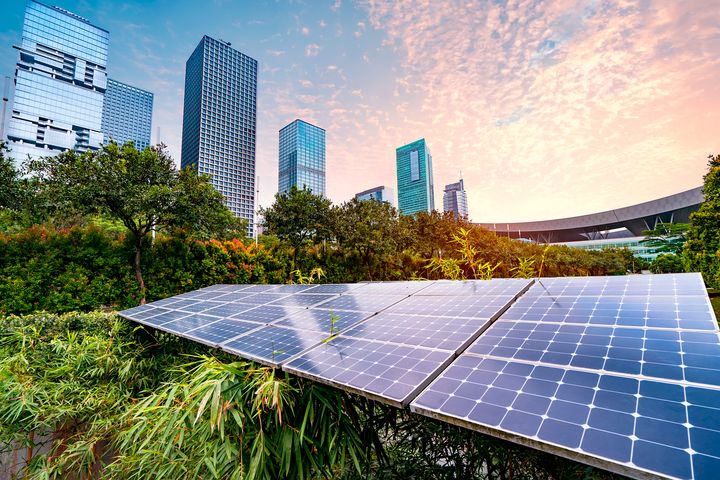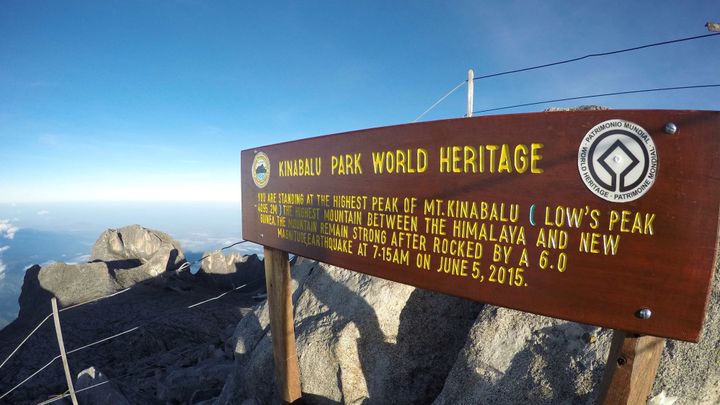Fixing Our Water Crisis: the Role of Indigenous Knowledge
We must change how we manage water urgently, say a team of young leaders from Chile and Aotearoa, who united under the CAPE Winds of Change programme to explore indigenous solutions to water problems.
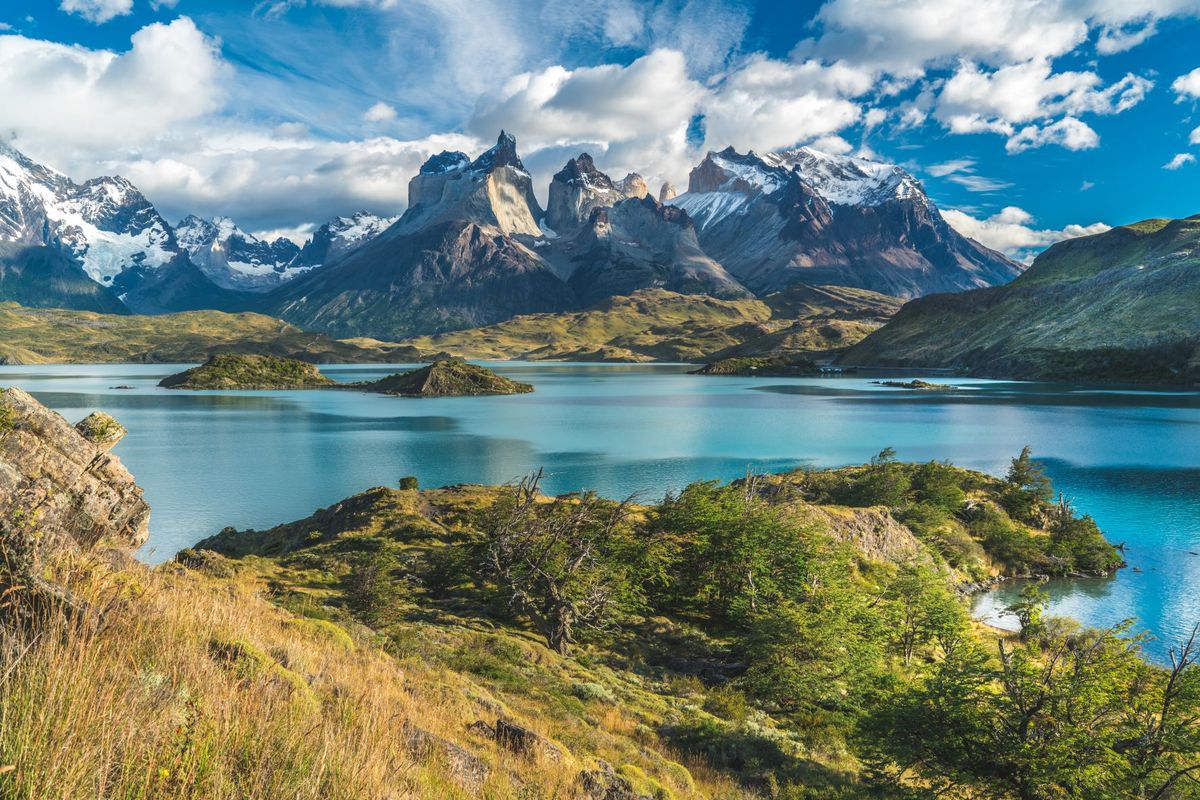
We must change how we manage water urgently, say a team of young leaders from Chile and Aotearoa, who united under the CAPE Winds of Change programme to explore indigenous solutions to water problems.
The team of two Kiwis, a Chilean and a 'Chiwi' (Chilean New Zealander) have written a passionate viewpoint stemming from their project for the Latin America CAPE's Winds of Change programme, as the team explains:
Our project was born from our concern of the state of water management and the effects that climate change was having on natural cycles. To help us figure out a path forward, we spoke to experts from industry, climate science, and indigenous groups across both New Zealand and Chile. We found that Indigenous perspectives could bring a new light to help with the current water crisis, as their values regarding water and nature aligned strongly with emerging science and industry practice around regeneration and sustainability.
The team reached some important conclusions through deep conversations with indigenous experts from both sides of the Pacific Ocean:
- The climate crisis is worsening the inequity of our water management so we have to change how we manage water urgently.
- Indigenous groups across both Chile and New Zealand have always had sustainability at the bedrock of their worldview and practices.
- Chile and NZ both need to change and adapt their water management and climate change mitigation strategies, and both can draw on this indigenous experience.
Read on to learn more about these findings and the teams discussions with experts in Aotearoa and Chile.
The project team:
Akuhata Bailey-Winiata (Māori/Kiwi), Master of Science (Earth Science) Honours, First Class, The University of Waikato
Andrea Eyquem ("Chiwi"), Bachelor in Physical Anthropology, University of Chile
Chris Lijzenga (Kiwi), Master in Sustainable Entrepreneurship, University of Groninger
Isabella Ciocca (Chilean), Master in Regional Science, University of Concepción
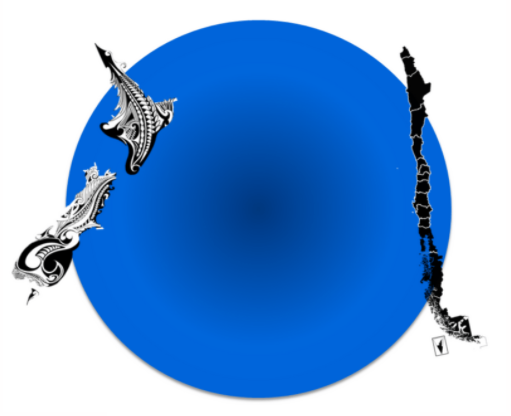
Indigenous perspectives on either edge of the Pacific Ocean
The world is in a climate crisis, a dreadful reality that crosses borders and territories, visible in the multiple environmental catastrophes, from rising sea levels and floods to extreme drought and wildfire. Many see these disasters as a direct result of the industrial revolution and the current economic system, which for decades operated as if nature was infinitely abundant, and the extraction of its 'resources,' free of consequences. This western way of interacting with the world could be redeemed by integrating and incorporating Indigenous practices and perspectives.
Indigenous peoples around the world have sustained themselves for generations in time, because of their holistic and reciprocal world views surrounding the land and the people. This is no different for Indigenous Māori of Aotearoa New Zealand, who are tangata whenua (people of the land) and have inhabited and sustained the landmass of New Zealand for the past 700 years. Māori have a distinct world view, beginning with the Māori creation story, with the supreme beings, Ranginui (Sky Father) and Papatūānuku (Earth Mother) separated from their loving embrace, bringing life and light to the world, with humans being born, sustained and eventually in death, returned to the womb of our supreme Mother.
On the other side of the Pacific Ocean, the Mapuche Indigenous people also have a holistic and reciprocal relation with nature and the land. Mapuche has a long history in this territory, with intergenerational knowledge and traditions. As Juan Tralcal Lleuful, a Mapuche geologist from Wenteche Mapu territory told us, “the Mapuche beliefs and customs regarding life, relation with nature and between humans have prevailed in spite of the historical violence against its people."
This resilient relationship with nature is accentuated in the impact of the Pacificación de la Araucania (‘Pacification of the Araucania’), a historical process of genocide of the pre-existing peoples in the territory and it’s consequent arbitrary land redistribution to European settlers, continues Juan. “Nonetheless the Mapuche people maintained their way of life, their kimün (knowledge), within which water plays an important role.” Their cosmovision or Küme Mongen (Buen Vivir/Good Living) is based on principles that have been shared through oral transmission; the laws that govern their way of life or Az Mongen can be described as the “appropriate behaviour that each person should have regarding their environment, with and for people and also for nature”. As he further explained:
“Ko (water) means life but not only because we live thanks to water but because water lives with us and beside us (...The relation we have with water is spiritual and complementary (...), a respectful symbiotic relationship. From the spiritual side, we have a connection with Ngen (owner, boss or protector), spiritual entities that represent or govern different aspects of nature, like rivers, lakes, mountains, the sea, etc. The Ngenko protect and own water expressions as Leufuko (rivers), Trayenko (watershed), Traitraiko (waterfalls), Menoko (places where water is born). Thus, we have to understand Ko as always accompanied by a spirit or as part of a spiritual expression we can communicate with, because Ngen has their own language, history and knowledge.” — Juan Tralcal Lleuful
Similarly, water, called Wai in Te reo, plays a crucial role in Māori cultural process or tikanga as well as the creation story, with the separation of the loving couple. Ranginui wept tears to his beloved wife below, analogous to rainfall, forming the process of the water cycle, providing sustenance to the land and the people and in doing so creating whakapapa (genealogy) between humans and water. A whakatauki (proverb) captures the essence of this relationship, as described to us by Troy Brockbank, Māori Water Engineer, Board Member of Water New Zealand and Taumata Arawai:
"ko wai ko au, ko au ko wai: We are water and water is us. Without water we’re nothing, without us water is nothing. One cannot live without the other; one is not above the other, we are not next to each other, we are one in the same.”
The holistic and reciprocal nature of the Māori world view transcends to water management, Troy explains:
“water is a taonga (treasure); it needs to be looked after, it needs to be treasured. If we're one in the same and one side is unhealthy it's going to reflect the other side, so if we want to be healthy, water needs to be healthy and vice versa which is topical when it comes to water scarcity”.
Juan shared similar words with us:
“My father mentioned that if water gets sick, we get sick too because we cohabitate in a spiritual life spectrum, the Küme Mongen. If the water is fine, healthy, we are going to be healthy too, and not because there is a direct connection but because the Ngenko is happy and well, it won’t transmit Mapuche diseases to us or Mapuche Kutran”.
Juan Tralcal explained to us how for them water is more than just a resource; how it’s more than something to just satisfy a necessity:
“Water, because it is a life form and has its spirituality and history, it has to be respected like any other form of life. (…) valuing water just as a resource would be to downplay the other forms that exist around it, and it’s a problem as we see overexploitation.
This reflection from Juan from one side of the Pacific brings us to another whakatauki, ko te wai te ora nga mea katoa, as interpreted by Troy:
“Water is the life giver of all things (...) if we take the first whakatauki, we are wai [water], water is water so without water we have nothing, but without people we have nothing”.
Turning to the current management of water in New Zealand, Troy believes the current system’s not working, and that "those with the money get water ... so they can use the water, they can access water. Those that do not have those things, cannot do that”.
In his eyes the RMA (Resource Management Act) should help bring some environmental context around how New Zealand manages water. While the RMA presents a Te Ao Maori component, it is not as strong as Troy initially thought it would be. Nonetheless, he sees this inclusion of Te Ao Māori in water management as a step in the right direction. Troy, however, is not a fan of the management concept:
“it's kind of like a controlling way around water and trying to manipulate it...so we're not actually managing water in a way that is giving mana (prestige) and respect back to water or that reciprocal arrangement with water [but at least] we do have te mana o te wai as part of the national policy statement for freshwater management.”
On the other side of the Pacific, the perception of water management in Chile is not on the positive side either. Juan describes it as a violation of the natural expression of life; damaging, cutting and destroying the water’s flow. This is specially perceptible when you learn that in Chile the water is owned mostly by private international companies, excluding mapuches and other indigenus groups on it’s management. Juan thinks this needs to change.
I think a new system should be with lower intervention, with a minimum damage (...), with respect to water and the other life forms, without intervening its natural flow, without selling the water, and at least for us, it should be related to our Mapuche autonomy.
Access is critical , Juan added:
“Access should be universal. Every person should have access to water, but also the other life entities, such as flora. So human access to water shouldn't limit the access to it of other life forms ... Also there has to be an important regulation regarding industry..., laws that allow the reuse of water”.
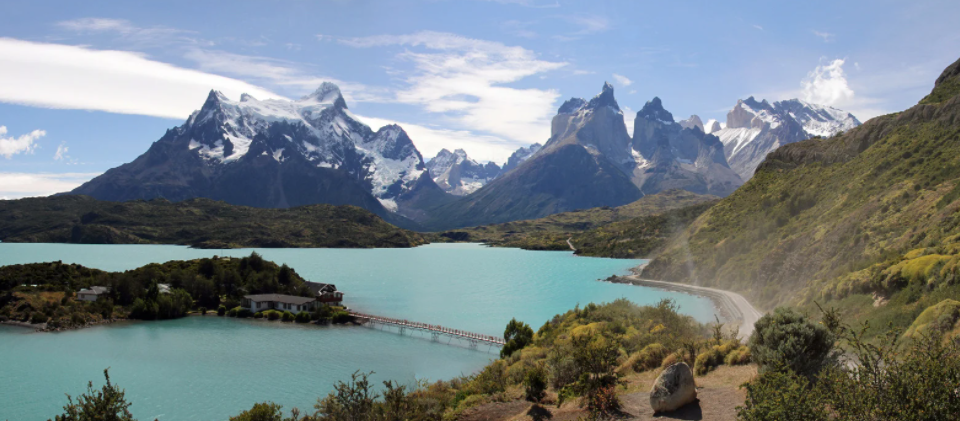
Water for life or trade?
Both Chile and New Zealand see water as a public good. However, in Chilean water law the resource is treated as an economic good as well. This has led to a tradable water rights system with a strongly free-market approach which tends to overlook water as a crucial resource for local communities and its cultural meaning. This system regulates water allocation as a de-facto private property right separated from land, freely traded and subject to minimal state regulation. The water rights deliver for free the right to use certain amounts of water, either for limited time or in perpetuity.
The state agency mandated to protect the resource and maintain an updated nation-wide inventory of water resources is the General Water Directorate, dependent on the Ministry of Public Works. Additionally, more than 25 state entities have powers over water, combined with more than 3.000 Water Users Organizations. Due to the low control capacity and historical information, there are many basins that are overexploited, over-granted or being stolen, especially in North and Central Chile.
In 2005, Chile's Water Code was amended because of the insufficiency of state regulation to ensure effective functioning of water markets and the need to discourage the stockpiling of water rights. The legislative aims included to reduce possible monopolistic distortion in the water and energy markets (and possible speculation) and to mitigate the effect of unused water rights on the economic development of the basins. It also introduced tools for improving the management of aquifers and expanding the power of administrative evaluation concerning requests of water rights. The Code also allowed users to solve disputes in local courts, thus facilitating decentralization, but the final appeal is the central Supreme Court, leading to overdemand for legal services. These modifications, however, did not lead to significant improvements.
In spite of the Chilean state having delivered water rights for free, between 2005 and 2008, nearly 20.000 private transactions occurred, amounting to 4,8 billion dollars. Big entities in the private sector absorbed many of the water rights. For example, 84 percent of consumption water rights (owners don’t need to return water to its flow) belong to mining and agro-exporters companies and 81 percent of non-consumption water rights (owners must return water to its flow) belong to ENDESA, a private electricity company. Additionally, almost all the sanitation companies in the country are private. All this creates a significant degree of inequality between access for ordinary Chileans and industry.
In New Zealand, the majority of drinking water comes from groundwater (53 percent), followed by rivers and lakes (26 percent), with the rest from rainwater (New Zealand Department of Internal Affairs, 2021). The water network consists of infrastructure and processes used to collect, store, transmit, treat, and discharge water. The infrastructure is complex and much of it is underground. A new Three Waters ownership and management model which is a lot more centralised will be phased in over the coming years. In the current model, regional councils are responsible for controlling and managing their own water infrastructure, leading to quite different systems scattered around the country.
One in five New Zealanders are supplied with drinking water that does not meet New Zealand’s drinking water standards, according to the Ministry of Health. Specific cases of water contamination over recent years have also damaged faith in the system for delivering water services. The Havelock North incident killed four people and caused illness in 5,500 of the town’s 14,000 residents. Recent infrastructure failures in Wellington and the discovery of elevated levels of lead in the water supply in Dunedin are more recent examples.
Discharges from wastewater treatment plants are harming the environment in many parts of New Zealand, particularly where multiple plants are scattered across a catchment or are operating poorly. Resource consents are required for the discharge of treated wastewater from treatment plants in all regions. A report in 2019 found that nearly a quarter of wastewater treatment plants are currently operating on expired consents. A high-profile news story in 2021 exposed that several big food and beverage manufacturers were breaching their wastewater discharge limits and dumping contaminants into the water.
Finally, the effects of intensive agriculture on nitrate levels in New Zealand waterways has been a significant social and political topic in recent decades. Mike Joy is one of NZ’s leading scientists, researchers and advocates in this space. He has spent years documenting changes in nitrate levels in waterways and studying the effect of industry on water quality. There are well established links between increased levels of nitrates in the water and multiple negative health outcomes for people, like colorectal cancer. There also appears to be inequalities baked into the system. Bottle water companies can take clean water from deeper bores and aquifers than what most everyday New Zealanders get through their home taps, and a lot of the country's quality freshwater is used to irrigate land for agriculture. Most urban homes do not house their own wastewater treatment or septic tanks, putting pressure on already stressed large-scale infrastructure.
While water as a resource is viewed quite differently between Chile and New Zealand, they both experience water inequality. In Chile, water markets and access is largely privatised, with every ordinary citizen paying per use in their residential homes or businesses. This varies in New Zealand where, in many parts of the country, like the capital Wellington, water is a public good and residential users do not pay for it. In spite of those differences, both countries see a lot of quality freshwater being used for industrial processes like irrigating farms. Re-use or recycling is rare, exemplified by the near complete lack of self-storage or septic tanks in urban spaces.
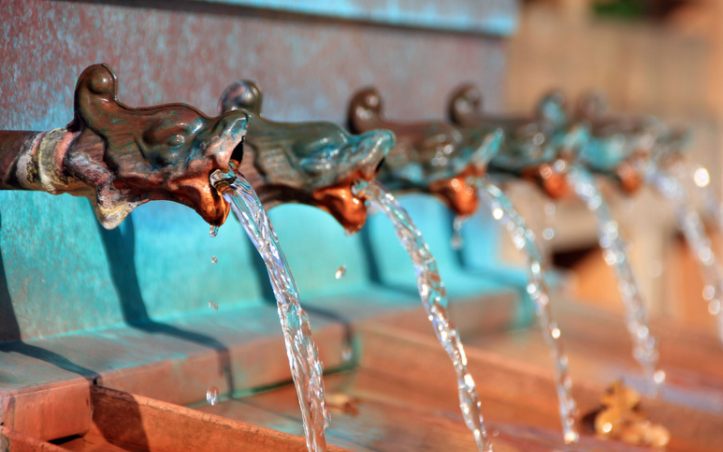
Effects of Climate Change
Climate change is already affecting Chile and New Zealand. Since 2010, Central and South-Central Chile has been affected by a Megadrought (MD), which has affected the agricultural and mining industry, sectors greatly dependent on reliable freshwater resources. In all Chilean regions, water market demand is significantly higher than the demand reported by government agencies. This demand is putting many regions are under considerable stress due to low water availability, variability in supply and the increasing impact of climate change. In addition, water scarcity increases the costs in the production of copper and lowers farm productivity, increasing food prices. This situation where demand for water exceeds water availability has the potential to create severe conflict, as well as rampant inequality.
The Megadrought conditions, combined with intensive agricultural activities and the current water management system, have led to water scarcity problems in Chile. Approximately 25 percent of this climatic condition has been attributed to anthropogenic climate change and could be considered as an advance of future climate conditions. The impacts of the current drought, along with the drier climate projections, emphasize the urgency for faster policy changes related to water provision. Climate change adaptation plans and policies should enhance the current monitoring network and the public control of water use to secure water access for inhabitants and productive activities. In the past few years, water scarcity combined with drought conditions have led many municipalities to get into debt in order to buy drinkable water. Furthermore, the Covid-19 pandemic has deepened the inequalities because many families do not have water to wash their hands (basic health care), depending on cistern trucks with a daily ration of 50 litres per person.
Climate change is also threatening water security in New Zealand, bringing extremes in rainfall and droughts across different parts of the country. Some areas are forecast to become drier over the next decades, and others considerably wetter. Water shortages will continue to disproportionately affect smaller, rural, and vulnerable communities. In addition, warming water temperatures across oceans, lakes and rivers are also driving algae blooms, compounding the already damaging effects of high nitrate levels in waterways. Essentially, climate change is exacerbating the already harmful effects humans are having on water systems, making everything worse, and more volatile.
As hopeless as that may sound, Mike Joy points out that the opportunities of addressing the challenge are enormous, because the interconnectedness of systems will ultimately make NZs water systems healthier and more resilient. That is because significantly lowering the footprint of heavily emitting parts of the economy like agriculture results in benefits beyond CO2 reductions. Such benefits include healthier soils, better animal welfare, less herbicides and pesticides, less nitrates leaking into waterways and more opportunities for native forestry.
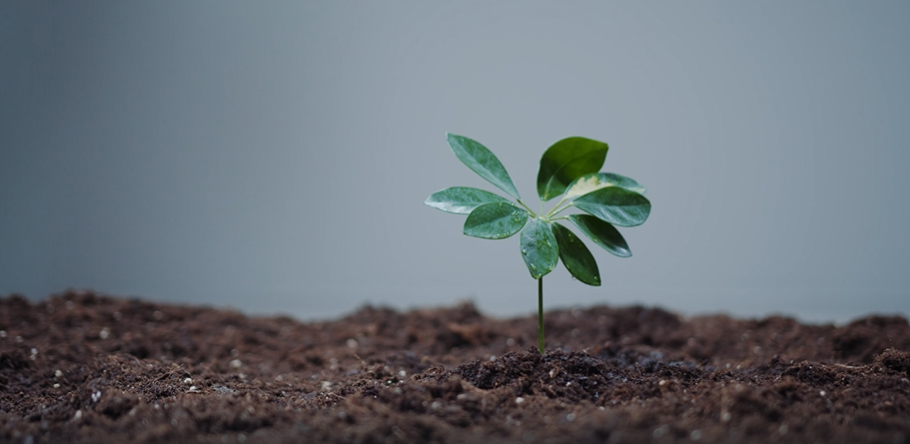
Meaningful change through regeneration
Climate change is rapidly accelerating the damage that humans are already doing to water systems across both New Zealand and Chile. Issues of water scarcity and water quality have been known for a long time, and people have been sounding the alarm for years. While it has taken far too long with no meaningful action on climate change mitigation or improvements to water management, it isn’t too late to turn things around.
In recent years, the discourse around sustainability has shifted towards the concept of ‘regeneration’. There are several ways to conceptualise regeneration, but at its core a regenerative approach doesn’t just seek to lower our impact on the environment but instead to work within the natural cycle and actually improve environmental outcomes. In other words, doing more good rather than just less bad.
Taking a holistic view of nature and rethinking the paradigm of water as a ‘resource’ is not a new idea, despite sustainability professionals only just latching on to it recently. Indigenous groups in both NZ and Chile have sustained themselves and the environment for hundreds of years owing to their holistic and interconnected worldview of humans being products of nature, not nature being products for humans. The relatedness of water to humans was common among both Indigenous peoples interviewed in this article; without water humans have nothing and vice versa. Valuing water not as an infinite resource but as kin has allowed Indigenous to thrive. We the authors are privileged to have been able to absorb this information and present the value and impact that an Indigenous view on water scarcity and management can have when embarking in an uncertain climate change future.

